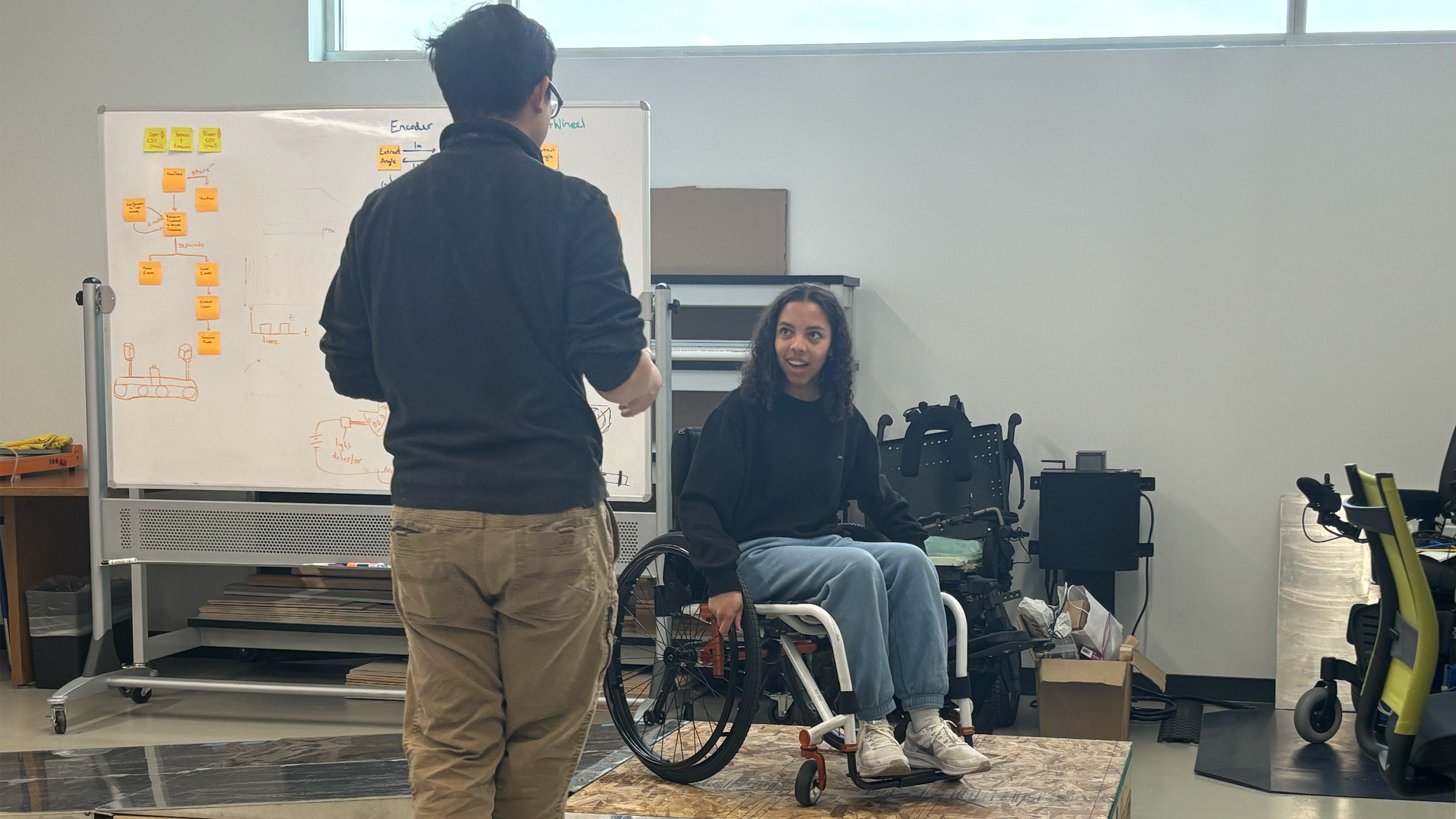Empowerment Program Engages Students
CIDE hosts lab tours for Denver Xplore program students
Morris Huang, Phd Mar 6, 2024
Click, clack, click.
The sound of buttons being mashed on a videogame controller fills the air, but this is not just any gaming session.
A high school student sits at the table, tapping an Xbox adaptive controller and connected switches as they control an onscreen game character while other students look on. As part of the exercise, the player must use their head and elbows to tap game control switches, emulating a user lacking the fine motor dexterity to operate a traditional handheld controller. This was one of several demonstrations and simulations of assistive technology (AT) for disability included in a lab tour experience held at CIDE’s Anschutz Medical Campus research lab on March 7, 2024
Beep Program and Mission
A total of 11 high school students – participating in Denver Public School’s Xplore Program for career exploration – attended the tour event organized by University of Colorado Denver’s Bioengineering Empowerment Program (BEEP). BEEP is a community-oriented, student-led initiative that connects local middle and high school students with the bioengineering program at the CU Denver and CU Anschutz campuses. Students have the opportunity to participate in workshops, lectures, tours and clinical experiences through the University.
Expert Guided Tours
On this day, students toured the CIDE lab and the Biomechatronics Development Lab. The CIDE tour was guided by director Dr. Cathy Bodine, an expert in inclusive technology and disability, and team members including Leslie Emery, a biomedical engineer with extensive experience in disability care, Aria Saunders, a research coordinator specializing in assistive technologies, Christa LeGray, a speech-language pathologist focused on early childhood AT, and Dr. Morris Huang, a researcher optimizing wheelchair configurations for better health outcomes.

Interactive AT Demonstrations
In CIDE’s research space, high school students rotated through different stations to experience various assistive technology, in some cases with a simulated disability. Examples included the use of eye-gaze controlled augmentative and alternative communication (AAC) devices, performing reading tasks while wearing simulated vision impairment glasses, navigating a skills course in a manual wheelchair, and playing a short RPG (Role Play Game) with an adaptive gaming controller and its switches. While most of the high school students in attendance were planning for a pre-med college track, the stations served to help them explore the different uses of assistive technology and showcase the role of rehabilitation engineering and bioengineering in the disability healthcare space.
Learn More
Check out the Bioengineering Empowerment Program (opens in a new tab) website to learn more about opportunities for students in science, technology, engineering, art, math & medicine (STEAMM) fields.
If you're interested in inclusive academics and research, visit our page: Leaders in Applied Research and Inclusive Design.